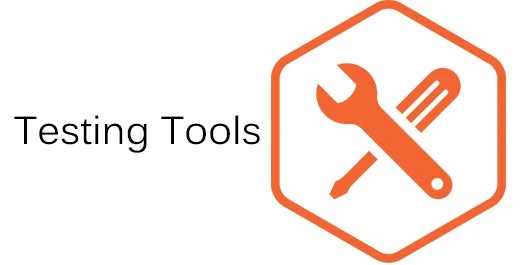Table of Content
Learn How to Perform Regression Testing Properly in Software Applications
Software testing is an important part of development that lets you know whether the application is working fine or not. Many experienced teams utilize different types of testing procedures to evaluate the efficiency of an application. Regression testing is one of those processes that is highly regarded by many developers. It provides a stability to the application by checking the execution and performance of every feature. Developers generally use regression testing in QA evaluation, so that they could get a detailed assessment related to the status of the application.
With the help of regression testing, developers can detect errors hidden deep inside the components. It specifically evaluates the functionality of an application, so that a proper analysis can be done. This process also require good technical knowledge about software testing, as how different tools are used and components are tested to find out vulnerabilities in the application. Due to this, many organizations prefer to take software testing services from reputed IT agencies. They understand the significance of this process, hence they always go with the specialized experts to evaluate the functional status of applications.
In this article, we will discuss comprehensively about regression testing. We will let you know why this is needed and how experienced teams perform it using different types of tools and methods. But, before moving into that, let’s start from the basics understanding why software testing is considered important in the software development lifecycle.
Why Software Testing is Considered Important?

Software testing is crucial because it ensures the quality and functionality of a product before it reaches users. By systematically identifying issues, testing helps to verify that the software meets the specified requirements and behaves as expected in different scenarios. This not only helps in delivering a reliable product but also saves time and costs associated with fixing defects later in the development process. Early detection of issues through testing can prevent potentially catastrophic failures, especially in critical systems where software glitches can lead to significant financial or safety risks.
Another reason QA testing is important is that it helps to ensure a positive user experience. Users expect software to work seamlessly and without interruptions, and any bugs or usability issues can lead to frustration, loss of trust, and ultimately, the loss of customers. Thorough testing, including usability and performance testing, ensures that the software not only functions correctly but also provides a smooth and intuitive user experience. This is particularly important in a competitive market where user satisfaction can directly impact a product’s success.
Software testing also plays a key role in maintaining the software’s long-term health and evolution. As software is updated regularly, testing ensures that these changes do not introduce new bugs or break existing functionality. This is especially important in agile development environments, where continuous integration and frequent releases are common. Automated testing, in particular, allows for rapid validation of changes, ensuring that the software remains stable over time. In this way, testing supports the ongoing maintenance of the software, contributing to its overall longevity and success.
What is Regression Testing?

Regression testing is a software testing technique that involves re-executing both functional and non-functional tests to verify that a software application continues to operate correctly following any modifications to its code. These modifications can include code changes, updates, revisions, or optimization brought recently into the product. Meanwhile, regression testing also ensures that these changes have not introduced new defects or adversely affected existing functionality. By systematically retesting the application, this process helps to confirm that the software still behaves as expected under various conditions.
This testing is a critical component of the software development lifecycle because it enables developers to identify unforeseen issues that may result from alterations to the codebase. Whenever changes are made—whether to fix bugs, add new features, or optimize performance—there is a risk of unintentionally disrupting other parts of the software. Regression testing in QA mitigates this risk by catching any errors that could have been introduced during the development process, ensuring that the application continues to meet its intended specifications and performance standards.
Furthermore, regression testing is essential in environments where continuous integration and continuous delivery (CI/CD) practices are employed. In such settings, where code is frequently updated and deployed, it becomes vital to ensure that new changes do not compromise the integrity of the software. By regularly performing regression tests, developers can quickly detect and address any issues, allowing for a smoother and more efficient development process. This not only helps in maintaining the quality but also allows developers to deploy softwares with better confidence.
When is Regression Testing Done?

Regression testing in QA should be conducted whenever a new requirement is added to an existing feature or when a new functionality is introduced. Adding new elements to a software application can potentially impact the existing codebase in unforeseen ways, leading to unintended consequences. By performing regression testing, developers can ensure that these additions do not disrupt the current functionality and that the software continues to work as intended. This testing is particularly important when integrating new features, as it validates that the new code does not interfere with the existing system.
Regression testing is also crucial when the codebase is modified to fix defects, optimize performance, or implement patch fixes. Any changes made to resolve issues or enhance the software’s efficiency can have ripple effects, potentially creating new bugs or affecting other parts of the system. For example, optimizing the source code might improve performance but inadvertently alter the behavior of certain features. Regression testing helps catch these side effects early, ensuring that the fixes or optimizations do not compromise the software’s integrity and that all functionalities remain intact and effective.
Additionally, regression testing in QA should be performed when releasing a new version of the software, making changes to the user interface, updating configurations, or integrating a new third-party system. These updates can significantly alter the software’s environment and its interactions with other systems. For instance, changes in the user interface could impact how users interact with the software, while integrating a new third-party system might introduce compatibility issues. By conducting regression tests in these scenarios, developers can verify that the software continues to function correctly across all components.
How to Perform Regression Testing in QA?

Regression testing is a specialized process that requires proper planning and clear objectives. A lot of people often commit mistakes while executing this process, because many of them do not know the prerequisites. If you are also one of them who do not know how regression testing in QA should be done, take a look at the step by step process defined below.
Figure Out Changes in Code
Understanding the impact and potential risks associated with the latest code changes is crucial for developing a robust regression testing strategy. A thorough assessment of how recent modifications might affect the overall system is essential in ensuring that no existing functionality is inadvertently compromised. One effective approach to achieve this is by conducting detailed code review sessions. During these sessions, it is important to carefully examine the specific components or modules that have been altered and evaluate how these changes might interact with the existing features.
To facilitate this process, leveraging a version control system like Git can be highly beneficial. Git allows developers to systematically compare the differences between the previous version of the code and the newly updated code. By analyzing these changes, teams can more accurately pinpoint areas that require focused regression testing. This method not only helps in identifying the direct impacts of code alterations but also aids in uncovering any potential risks that might not be immediately apparent, thereby enhancing the overall quality and reliability of the software.
Stuck with a software application ridden with errors and bugs? Get expert QA and testing services now to ensure streamline software performance.
Contact NowSelect Areas of Impact
Following the identification of the changes introduced in the code, QA teams engage in detailed discussions to determine the appropriate testing strategy for each modification. These discussions are essential for prioritizing testing efforts and ensuring that the most critical areas of the application receive the necessary attention. During these sessions, the team evaluates the scope and significance of each change. The objective is to identify which changes require extensive, in-depth testing and which can be addressed with more targeted, adequate testing.
Particular emphasis is placed on modifications that affect core features of the application, as well as those that significantly alter its overall functionality. Changes that have the potential to disrupt key operations or that introduce new workflows should always be prioritized for comprehensive testing. These high-priority areas are where the risk of defects or unforeseen issues is greatest, making it crucial to thoroughly validate their stability and performance. By focusing on these critical aspects, the QA team can help ensure that the application continues to operate reliably.
Select Test Cases to Re-execute
The next step in the regression testing process involves carefully selecting the specific test cases to re-run based on the modules or components of the source code that have been modified. It is not necessary to execute the entire test suite at this stage; instead, the focus is on identifying and prioritizing the test cases that are most relevant to the recent changes. This targeted approach ensures that testing efforts are both efficient and effective, concentrating resources on areas of the application that are most likely to be affected by the code updates.
Once the relevant test cases have been identified, they are further categorized into two distinct groups: reusable and obsolete test cases. Reusable test cases are those that remain applicable and valuable for ongoing and future regression testing, and they are shortlisted for immediate execution. These test cases are crucial for verifying that the recent changes have not introduced any defects or negatively impacted existing functionality. On the other hand, obsolete test cases are those that are no longer relevant due to changes in the application’s structure or functionality.
Evaluate Test Environments
Maintaining readily available test environments is essential for conducting frequent and effective regression testing. In a development process where new code is continuously being integrated, it is crucial to have stable, well-prepared environments that are always ready for testing. These environments must be properly configured and aligned with the testing schedule to ensure that the testing process proceeds without delays or interruptions. Without reliable test environments, the entire testing timeline can be disrupted, potentially leading to overlooked defects and compromised software quality.
Moreover, the quality of the test environment directly influences the accuracy and reliability of the testing outcomes. Poorly set up environments can lead to a host of issues, including increased likelihood of test failures, and undetected defects. These problems can obscure the true impact of the recent code changes, making it more difficult to identify and address potential issues. Therefore, it is critical to ensure that test environments are meticulously maintained and consistently monitored, so that they reflect the production environment as closely as possible.
Execute Regression Testing
At this point in the process, all test cases have been prepared and are ready for execution. Teams can now proceed to schedule the execution of these test cases according to the established test plan. This scheduling is a critical step, as it ensures that the testing process aligns with the project timeline and meets the specific functional requirements of the development cycle. Some test cases may be strategically scheduled to run at predetermined intervals throughout the development process, providing continuous feedback on the stability and performance of the application as it evolves.
Implementing time-based test execution offers teams enhanced control over the quality of their application amidst ongoing changes. By regularly running certain test cases, teams can closely monitor the impact of new code on the overall system, allowing them to quickly identify and address any issues that arise. This proactive approach to testing not only helps in maintaining the integrity of the application but also ensures that any potential defects are caught early, reducing the risk of significant problems down the line.
Best Regression Testing Tools in QA

There are various types of software testing tools with which you can perform regression testing in QA. These platforms offer a variety of features that allows developers to conduct regression testing easily. Here are some of the popular regression testing tools listed below.
Selenium
Selenium, primarily used for automating web applications for testing purposes, supports regression testing by enabling testers to re-run previously executed test cases against new builds of a software application to ensure that existing functionalities work as expected. By automating test scripts, Selenium facilitates continuous integration and continuous deployment (CI/CD) processes, making it easier to detect any unintended side effects or bugs introduced by recent changes in the code.
Katalon
Katalon Studio enhances regression testing by offering a robust, all-in-one test automation solution that simplifies the process of re-running test cases. It supports both web and mobile applications, and integrates with various CI/CD tools, enabling seamless execution of regression tests as part of continuous integration pipelines. Katalon Studio features a user-friendly interface with built-in test recording, scripting, and debugging tools, which helps streamline the creation and maintenance of regression test suites.
Apache JMeter
Apache JMeter, while primarily designed for performance and load testing, can also be utilized for regression testing by assessing the impact of code changes on application performance. Although JMeter is not inherently tailored for traditional regression testing of functional aspects, it can help identify performance regressions by re-running load tests on new builds and comparing results against baseline performance metrics.
Frequently Asked Questions
| Why is software testing important? Software testing is crucial for identifying and fixing defects before release, ensuring the software meets quality standards. It helps prevent costly post-deployment issues and enhances user satisfaction by delivering a reliable product. |
| What is regression testing in QA process? Regression testing in QA ensures that recent code changes haven’t adversely affected existing functionalities. It involves re-running previously conducted tests to verify that previously fixed issues remain resolved. |
| Which are the popular tools for regression testing? There are different types of software testing tools used for regression testing. Some of the popular names among them include Selenium, Apache JMeter, Ranorex Studio and more others. |
Final Words
That brings us to the end of this blog in which we have discussed what is regression testing and how it should be performed to find out vulnerabilities in the application. It is an important part of software testing that allows developers to re-execute tests on new source code changes whenever they happen across the application.
Learning the concept of regression testing in QA is important for developers, because it gives them an ability to test app components whenever they are updated, redesigned or integrated with any other feature. This blog has discussed various points related to regression testing, allowing you to completely understand its concept and usage in the software testing process.
Empower your digital initiatives with BariTechSol, a premier custom software development company. Our skilled team tailors cutting-edge solutions to your unique needs. Elevate your tech experience and stay ahead in the digital realm. Partner with BaritechSol and code the success of your next big idea.

